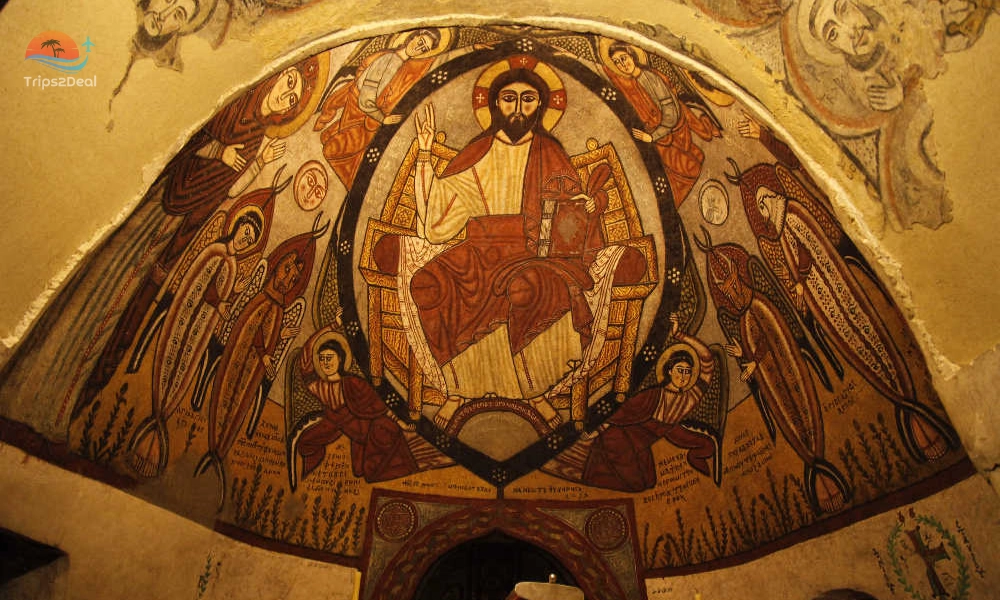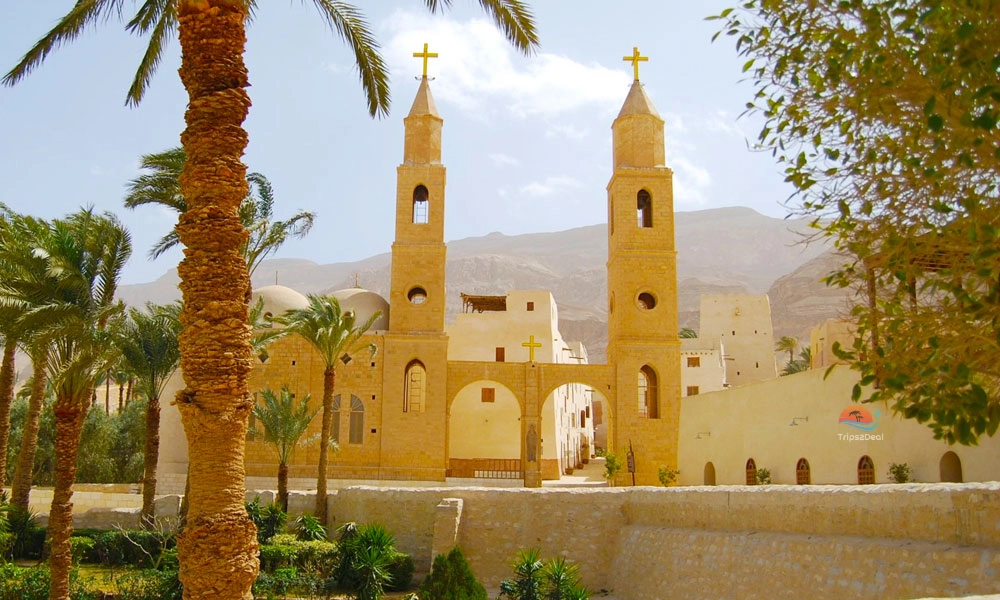Blogs

St Anthony Monastery
I'll be honest ,when I first heard about St. Anthony Monastery Egypt, I thought it was just another tourist trap. Boy, was I wrong. This place is the real deal ,the oldest monastery in the world that's still functioning exactly as it did centuries ago. We're talking about the birthplace of Christian monastic sites, where monks have been praying continuously for over 1,600 years. What hit me most was realizing this isn't some preserved relic. Real monks live here right now, following the same daily routines their predecessors did in the 4th century. The silence, the ancient stones, the sense of stepping outside modern time ,it's impossible to fake that kind of authenticity.
Table of Contents
- The Man Who Started It All
- How a Desert Hideout Became a Monastery
- Architecture That Takes Your Breath Away
- The Monastery That Changed Christianity Forever
- Sixteen Centuries of Just Surviving
- Places That Still Give Me Goosebumps
- Why People Still Make the Journey
- Ancient Traditions Meet Modern Reality
- Planning Your Visit (Trust Me, It's Worth It)
- Why This Place Still Matters
The Man Who Started It All
St. Anthony the Great wasn't your typical saint. This guy was born into money around 251 AD,think wealthy Egyptian family with land, servants, the works. But here's what gets me: at just twenty years old, he heard one Bible verse about selling everything to help the poor, and he actually did it. Not partially, not eventually ,immediately.
The founder of monasticism literally walked away from comfort into the harsh Egyptian desert with nothing. He spent decades alone in caves, wrestling with doubts, temptations, and his own spiritual journey. What's incredible is that people started following him anyway, even though he was trying to be alone. These followers became the Desert Fathers, and they basically invented the whole idea of monks living together in community.
Anthony didn't plan to start a movement, he just wanted to find God. Sometimes the most authentic things happen when you're not trying to create something impressive.
How a Desert Hideout Became a Monastery
The founding of St. Anthony Monastery around 365 AD wasn't some grand plan ,it grew naturally. Anthony's disciples kept camping near his hermitage, and eventually they realized they needed permanent shelter. Smart guys, they picked a spot at the base of the Qalala Mountains in Egypt's Eastern Desert that had everything: fresh water springs, mountain protection, and enough isolation to keep the outside world at bay.
These 4th century monastery builders knew what they were doing. They constructed twelve-meter-high stone walls that could withstand sandstorms and raiders. Inside, they created a complete world ,churches, living quarters, workshops, even farmland. Everything they needed to survive and thrive in one of Earth's harshest environments. Looking back, they were creating the blueprint for monasteries everywhere. Pretty amazing for a group of desert hermits who just wanted to pray in peace.

Architecture That Takes Your Breath Away
The Coptic monastery architecture here isn't about showing off ,it's about survival and spirituality combined. The St. Anthony Monastery structure has evolved over centuries, with each generation adding their own touches while respecting what came before.
Walking into the Church of St. Anthony, you're surrounded by ancient frescoes Egypt from the 13th century. These aren't just pretty pictures ,they're stories painted on walls for monks who couldn't read. The colors are still vibrant after 800 years, which says something about the skill of those medieval artists.
But the seven-story tower? That's what really impressed me. It's like a medieval skyscraper, built as the ultimate safe room when Bedouin raiders came calling. Today it houses part of their incredible library with over 1,700 ancient manuscripts. Those ancient frescoes Egypt and the tower together create this amazing blend of defensive architecture and sacred art.
The Monastery That Changed Christianity Forever
Here's something most people don't realize: early Christian monasticism didn't exist before this place. The monks here literally invented the idea of religious communities living together. Before St. Anthony, Christians who wanted to focus on God just became hermits. These guys figured out how to balance personal spiritual practice with community support.
The Coptic monastic life they developed became the template for monasteries from Ireland to Ethiopia. Visitors came from across the Roman Empire to see what these desert dwellers were doing, then went home and started their own communities. Egyptian monastery traditions that began in this remote desert outpost influenced Christianity worldwide.
What amazes me is how they balanced individual prayer time with communal work and worship. They weren't trying to escape the world ,they were creating a better way to live in it.
Sixteen Centuries of Just Surviving
The preservation of St. Anthony Monastery is honestly miraculous when you consider what they've been through. I'm talking about invasions, earthquakes, economic collapses, political upheavals ,basically every disaster you can imagine hitting one small desert community.
When the Arabs conquered Egypt in the 7th century, the monks had to completely reinvent their relationship with the outside world. Threats to monasteries in Egypt included not just warfare but constant Bedouin raids, which is why they built that massive defensive tower. During attacks, the entire community would retreat inside and wait it out.
The monastic resilience these guys showed is incredible. Earthquake destroys the church? They rebuild it. Political situation changes? They adapt while keeping their core identity intact. Economic hardship? They find new ways to support themselves. That kind of flexibility combined with absolute commitment to their mission ,that's how you survive sixteen centuries.
Places That Still Give Me Goosebumps
The Church of St. Anthony Egypt is where daily prayers have been offered for centuries without interruption. Standing there during evening prayers, hearing chants that haven't changed since the Middle Ages ,it's like time travel. The frescoes showing the Last Supper and Crucifixion aren't just religious art; they're meditation focal points worn smooth by centuries of faithful gazes.
But the Cave of St. Anthony? That's the real pilgrimage destination. Getting there requires a serious mountain climb, but it's worth every step. This tiny rock shelter is where Anthony himself lived and prayed. You can still see prayers he carved into the stone with his own hands. The silence up there is so complete it's almost overwhelming.
Their collection of Coptic manuscripts blew my mind. We're talking about biblical texts, theological treatises, historical chronicles spanning over a thousand years. These aren't just books ,they're the written DNA of early Christianity in Africa, preserved by monks who understood their importance long before anyone else did.
Why People Still Make the Journey
Christian pilgrimage Egypt to St. Anthony's has been happening for over sixteen centuries, making it one of the world's oldest continuous pilgrimage sites. What draws thousands of visitors annually, especially during Coptic feast days, isn't just historical curiosity ,it's the chance to experience authentic spiritual tradition.
The Feast of St. Anthony on January 30th is something special. Coptic Orthodox believers come from across Egypt and beyond for prayers, processions, and liturgical services that connect them directly to their spiritual roots. Religious tourism Egypt has grown as word spreads about this genuine spiritual experience.
What I love about pilgrimage here is how it challenges you physically and spiritually. That climb to Anthony's cave isn't just exercise ,it's preparation for encountering something deeper. The Coptic feast days let you witness traditions that have remained unchanged for centuries, which is rare in our rapidly changing world.

Ancient Traditions Meet Modern Reality
Modern Coptic monasteries face a tricky balance: how do you preserve 1,600-year-old traditions while dealing with contemporary needs? St. Anthony Monastery today has found their answer through careful integration of modern technology that stays largely invisible to visitors.
They use solar panels for electricity, modern communications to stay connected with Coptic communities worldwide, and improved healthcare facilities. But walk through the monastery and you'd never know it ,the timeless atmosphere remains intact. The 120 monks who live here still follow traditional schedules of prayer, work, and study that would be recognizable to their 4th-century predecessors.
The monastery has become a major center for Coptic Orthodox education, attracting young men considering monastic life. Religious tourism Egypt keeps growing as more international visitors discover this authentic spiritual destination that offers real encounters with living Christian traditions.
Planning Your Visit (Trust Me, It's Worth It)
Visiting St. Anthony Monastery requires some planning, but the experience is unforgettable. The monastery sits about 334 kilometers southeast of Cairo ,roughly a four-hour drive through spectacular desert scenery that's part of the experience.
Take the Cairo-Suez highway and follow signs toward Zafarana and the Red Sea coast. The drive itself is amazing, with constantly changing desert landscapes that give you time to mentally prepare for what you're about to experience. Monastery tourism has grown enough that many tour companies offer organized trips, but honestly, the drive is half the adventure.
Here's what every Egypt monastery travel guide should tell you: respect is everything. Dress modestly , long pants and covered shoulders, no exceptions. Keep your voice down; monks are often in prayer. Photography is restricted in sacred areas, and for good reason. Remember, you're visiting a living religious community, not a museum.
Why This Place Still Matters
The legacy of St. Anthony Monastery goes way beyond its role as a tourist destination or historical monument. This place represents a living bridge between early Christianity and modern spiritual seeking. For nearly seventeen centuries, monks here have maintained an unbroken tradition of prayer, service, and witness.
As a Coptic heritage site, the monastery preserves cultural and religious traditions that might otherwise disappear. The principles St. Anthony established continue influencing Christian communities worldwide, proving that ancient wisdom still speaks to contemporary spiritual needs.
Spiritual tourism Egypt at St. Anthony Monastery offers something increasingly rare: authentic encounter with genuine religious tradition. In our age of instant everything, there's something profound about experiencing practices that have remained unchanged for centuries. The legacy of St. Anthony Monastery will keep inspiring people who find in this desert sanctuary proof that some things are worth preserving, no matter what.





